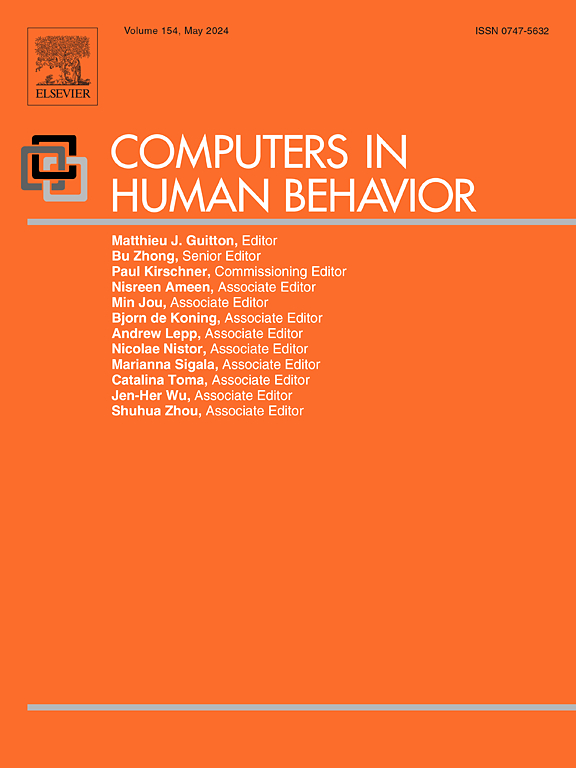同时与多个虚拟世界交互时的任务切换训练
IF 9
1区 心理学
Q1 PSYCHOLOGY, EXPERIMENTAL
引用次数: 0
摘要
今天的虚拟现实(VR)环境可以为用户提供高度身临其境的体验,并在这些环境中提供高度的存在感。此外,这种存在感可以在多个虚拟世界中同时感受到,而用户可以与每个虚拟世界进行交互并在它们之间移动。在目前的研究中,我们假设通过同时存在于几个虚拟世界中来增强人类的身体能力将对任务转换训练有积极的贡献。当任务在一个、两个和四个不同的虚拟世界中执行时,我们通过检查任务切换训练的有效性来评估我们的假设。该研究将59名参与者随机分为三组。结果表明,虽然1-World组、2 - world组和4 - world组参与者的训练经历在训练时间和训练过程中的错误方面是相似的,但不同的环境在迁移阶段产生了不同的结果。更多的世界导致更长的转移时间。此外,与1-World组相比,4 - world组在选择正确的组装模型时犯了更多错误。因此,我们的假设没有得到支持,研究结果指向相反的方向。在多个不同虚拟世界的任务之间切换,不但没有提高任务切换训练的效果,反而导致迁移任务的性能下降。这一发现可能意味着,与在一个环境中执行任务相比,在多个虚拟世界中同时执行任务可以降低认知负荷,并可能恶化训练的转移。本文章由计算机程序翻译,如有差异,请以英文原文为准。
Task switching training when interacting with several virtual worlds simultaneously
Today's virtual reality (VR) environments can offer highly immersive experiences to users and a high sense of presence in these environments. Moreover, this sense of presence can be felt simultaneously in several virtual worlds, while users interact with each and move between them. In the current study, we hypothesized that enhancing humans' physical capabilities by being present in several virtual worlds simultaneously will contribute positively to task switching training. We evaluated our hypothesis by examining the effectiveness of task switching training when the tasks are executed in one, two, and four different virtual worlds. The study randomly assigned 59 participants to one of three between-participants groups. The results demonstrated that although participants' training experiences in the 1–World, 2–Worlds, and 4–Worlds groups were similar regarding training time and errors performed during training, the varied environments produced different results in the transfer phase. More worlds caused significantly longer transfer times. Additionally, the 4–Worlds group made many more errors when selecting the correct model to be assembled compared to the 1–World group. Hence, our hypothesis was not supported, with the findings pointing in the opposite direction. Instead of improving the task switching training, switching between tasks located in several different virtual worlds caused performance to deteriorate in the transfer task. The findings might imply that performing tasks set in multiple virtual worlds simultaneously can lower the cognitive load compared to performing them in one environment and can deteriorate the transfer of training.
求助全文
通过发布文献求助,成功后即可免费获取论文全文。
去求助
来源期刊

Computers in Human Behavior
Multiple-
CiteScore
19.10
自引率
4.00%
发文量
381
审稿时长
40 days
期刊介绍:
Computers in Human Behavior is a scholarly journal that explores the psychological aspects of computer use. It covers original theoretical works, research reports, literature reviews, and software and book reviews. The journal examines both the use of computers in psychology, psychiatry, and related fields, and the psychological impact of computer use on individuals, groups, and society. Articles discuss topics such as professional practice, training, research, human development, learning, cognition, personality, and social interactions. It focuses on human interactions with computers, considering the computer as a medium through which human behaviors are shaped and expressed. Professionals interested in the psychological aspects of computer use will find this journal valuable, even with limited knowledge of computers.
 求助内容:
求助内容: 应助结果提醒方式:
应助结果提醒方式:


